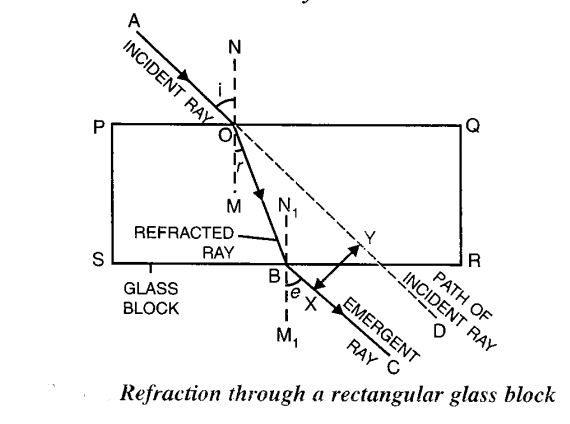Lateral displacement of light due to refraction through the glass block
Last updated on April 14th, 2021 at 05:22 pm
This post is going to explain the term Lateral Displacement of light which is related to the refraction of light. This phenomenon is observed when a ray of light gets refracted twice while passing from air to a parallel-sided glass block and then again to air.
Lateral displacement of light due to refraction
When refraction of light happens at two parallel surfaces of a parallel-sided glass block, the angle of emergence is found to be equal to the angle of incidence. at the same time, the emergent ray is found to be parallel to the incident ray, but not in the same line. The emergent ray is laterally displaced from the path of the incident ray.
The perpendicular distance between the emergent ray and the direction of the incident ray is called Lateral displacement.

The Factors determining the lateral displacement
The factors on which the lateral displacement depends are (1) Thickness of the block or the medium (2) The angle of incidence (3) The refractive index of the block material
More the thickness of the block(or medium), the more is the lateral displacement of the light ray.
Similarly, more is the angle of incidence, the more is the lateral displacement of the light ray.
And, more is the refractive index of the block or medium, the more is the lateral displacement of the light ray.
